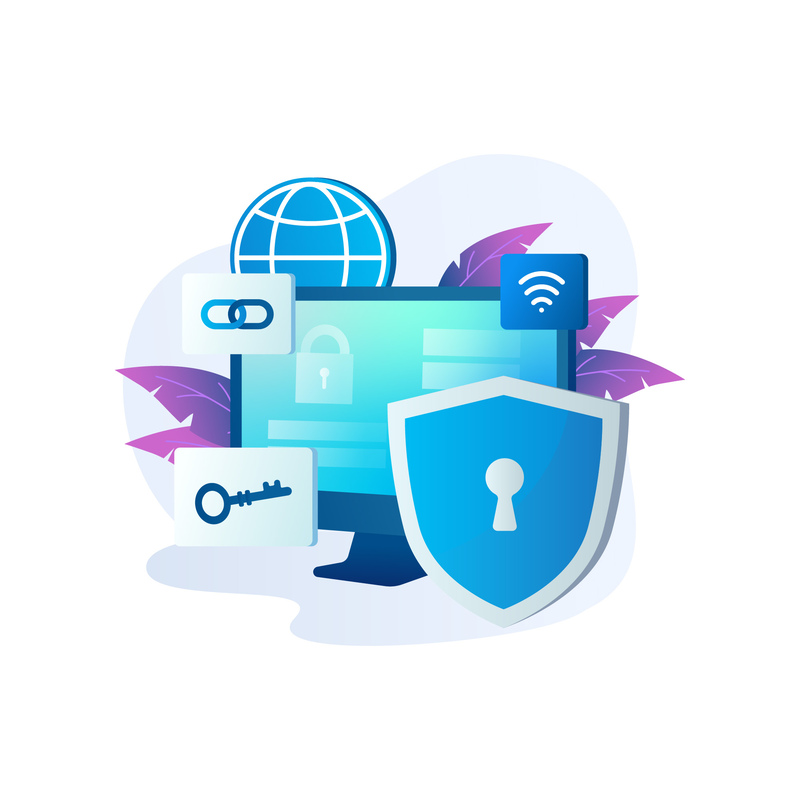COMMON CYBERSECURITY RISKS IN REMOTE WORKING ENVIRONMENT
Since the onset of the pandemic in 2020, work styles worldwide have undergone significant changes. Remote working, which allows employees to work without physically being in the office, has seen a surge in popularity. Today, it remains a key part of modern work environments. While remote work offers numerous benefits for both businesses and employees, it also exposes organizations to one of the most critical concerns: cybersecurity. In this article, we will explore common cybersecurity risks in remote work settings and discuss strategies to safeguard business data effectively.
Cybersecurity Risks in the Evolving Landscape of Remote Work
Even after the pandemic, remote working remains an essential work model. As remote work offers numerous benefits for both businesses and employees. For businesses, it reduces costs, boosts productivity, and allows access to a wider talent pool. Geographical limitations are no longer a barrier to hiring. For employees, remote work provides more flexibility in balancing work and life. This leads to greater job satisfaction and higher retention rates. It also helps employees save time and money by minimizing commuting costs.Even though 90% of companies will require return-to-office mandates in 2025, many still prefer hybrid working styles for greater flexibility and efficiency. While remote work offers numerous benefits, it’s important to note that remote workspaces are particularly vulnerable to cybersecurity risks. According to Wifitalents, remote workers are three times more likely to face phishing and malware attacks. Additionally, cyber attacks on cloud-based services have increased by 238% due to remote work. In the following section, we’ll explore the most common cybersecurity threats frequently encountered in remote work environments. By gaining a clear understanding of these threats, you’ll be better equipped to develop strategies that effectively mitigate risks in today’s modern work setting.

Common Cybersecurity Risks in Remote Workspaces
Phishing attacks
One of the most common cybersecurity risks in remote working environments is phishing attacks. These cyber threats gather personal information, such as names and contact details, to deceive individuals into thinking they are dealing with authorized parties. The primary aim of these attacks is to obtain sensitive personal information, including passwords or credit card numbers.
Here are some typical types of phishing attacks that remote workers should be aware of:
- Email phishing: This is the most prevalent form of phishing. Attackers send deceptive emails that appear to come from legitimate businesses or colleagues. These emails often contain malicious links or attachments designed to steal information or install malware on devices.
- Spear phishing: With a more targeted approach, attackers customize their messages to specific individuals or organizations, often using personal information gathered from social media or other sources. This approach makes scams more convincing and increases the likelihood of success.
- Vishing (Voice phishing): In vishing, scammers make phone calls while posing as representatives from banks, government agencies, or trusted companies. They attempt to persuade individuals to disclose sensitive information, such as passwords or financial details, over the phone.
- Smishing (SMS phishing): Similar to email phishing, smishing involves sending fraudulent text messages. Attackers may provide harmful links or request personal information by pretending to be from reputable organizations.

Unsecured devices and networks
Unlike on-site devices protected by the organization’s IT team, remote workers often use personal devices for work.If these devices are not well managed and maintained, they can become easy entry points for cybersecurity risks. Furthermore, when connected to unsecured networks, such as home routers or public Wi-Fi, the risk of exploitation increases significantly. Unsecured networks typically lack encryption, allowing attackers to intercept sensitive data. Malicious actors can deploy malware through these connections, leading to data breaches or unauthorized access to confidential information.
Lack of visibility in remote activities
With employees working remotely, organizations have limited oversight over their daily activities, making it difficult to monitor potential security risks. This lack of visibility significantly increases vulnerability to cybersecurity risks such as insider threats, data breaches, and leaks. Without direct supervision, employees may unknowingly use insecure devices or networks, exposing corporate data to unauthorized access. They might install unapproved software or access unsecured websites, creating new entry points for malware or other malicious activities. Additionally, the risk of phishing attacks increases as remote employees can be more easily targeted, especially without the immediate support of an IT team to identify and mitigate threats.

Overcoming Cyber Security Risks in Remote Work by Implementing the Right Strategy
While remote working is often a prime target for cybersecurity risks, safeguarding your business from these risks is entirely achievable. Businesses must implement a comprehensive strategy to protect their systems and data from cybersecurity threats. Here are some key best practices to consider:
- Establish a Remote Working policy: This remote working policy outlines clear guidelines for remote employees on how to protect the organization’s IT infrastructure. Beyond work-related requirements, it is crucial to define security protocols and specify the approved tools, software, and workspaces employees should use. This ensures everyone follows proper procedures to maintain cybersecurity while working remotely.
- Utilize Virtual Public Networks (VPN) and Multi-Factor Authentication (MFA): VPNs provide secure access for remote devices, adding an extra layer of protection for both remote employees and your business systems. In addition, MFA also helps prevent unauthorized access, further strengthening the organization’s cybersecurity.
- Implement Security Training for Employees: A joint study by Stanford and a cybersecurity organization found that 88% of data breaches result from employee mistakes. Therefore, implementing security-focused training for all staff, with extra emphasis on remote workers, is crucial to minimizing these risks.
- Ensure endpoint security: Equipping remote devices with up-to-date security software, antivirus programs, firewalls, and other essential protections is key to minimizing cybersecurity risks in remote work environments.
- Develop an Incident Response Plan: Since it is impossible to completely eliminate cybersecurity incidents, businesses must develop an incident response plan specifically for remote work scenarios. This plan enables quicker mitigation efforts to minimize the impact on business operations.

In summary, enhancing cybersecurity measures is crucial for both on-site and remote work environments, as risks can arise anytime and anywhere. For remote work, transparency and a clear remote working policy are necessary to ensure employee compliance with business standards. On-site cybersecurity can be more complex, so for more information, check out our article on choosing the right cybersecurity services for your business. If you have any further questions regarding cybersecurity services, please feel free to contact us.





